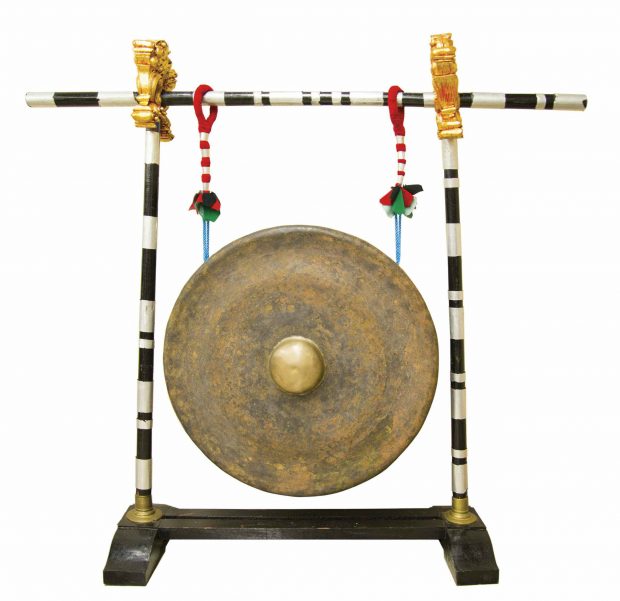The Heart of the Gamelan

In the mid-1990s, the Department of Music ordered a set of approximately 30 instruments that formed the basis for Giri Kusuma, Pomona’s Balinese gamelan. Originally organized by the late Professor of Music Katherine Hagedorn, the ensemble has been directed since 1999 by Nyoman and Nanik Wenten, who are traditionally trained artists from Bali and Java and longtime faculty members of the Herb Alpert School of Music at CalArts.
- The word “gamelan” means “percussion orchestra” and refers to the many kinds of bronze, iron or bamboo percussion instruments played in Southeast Asia.
- The set of instruments used in Pomona’s ensemble is called gamelan gong kebyar, named after the central instrument.
- The word “kebyar,” which can be translated as “bursting open” or “explosive,” is also used to describe the modern gamelan’s dynamic, fiery style of music.
- The gong-gdé, or “big gong,” is considered the heart of the ensemble. It articulates the beginning or end of each musical cycle.
- The gong is the largest instrument in the gamelan. Cast in bronze, it weighs about 50 pounds and is played with a padded mallet while suspended from a wooden frame.
- Like most gamelan gongs, this one was made in Java. Most other instruments in the gamelan were made in Bali and shipped to the United States.
- The gamelan’s music director, Nyoman Wenten, and dance director, Nanik, were featured in a recent documentary about gamelan music titled Bali: Beats of Paradise.
